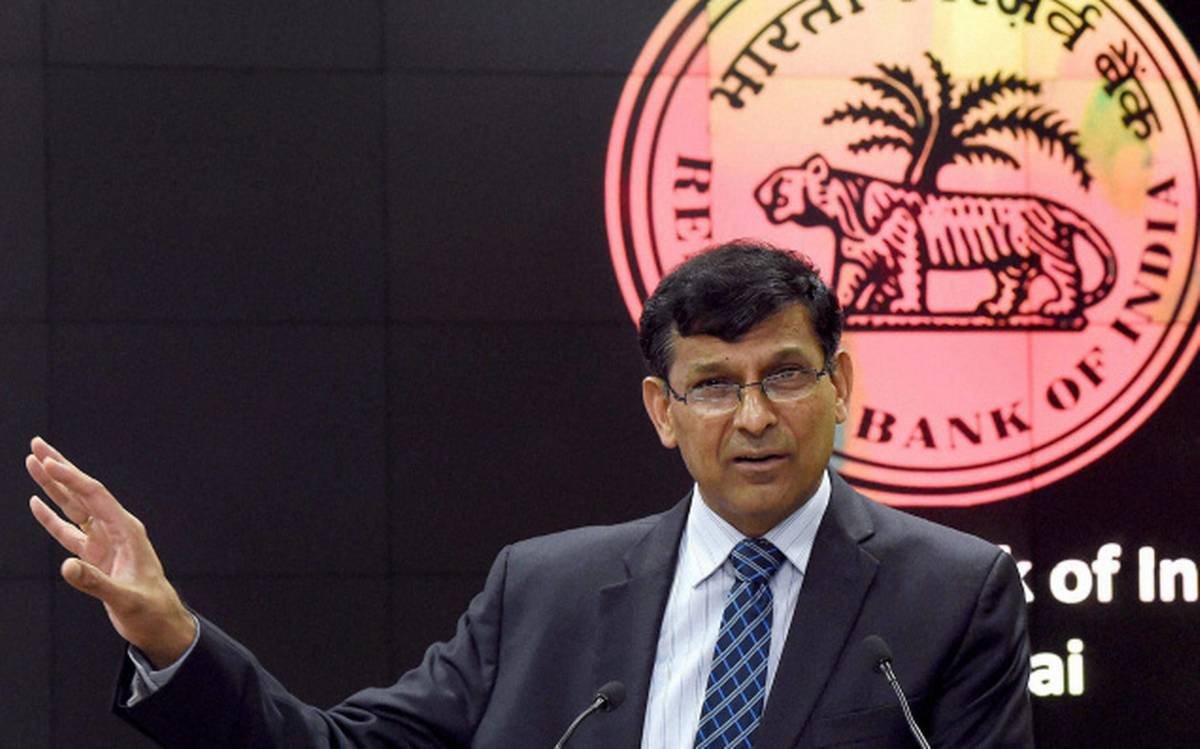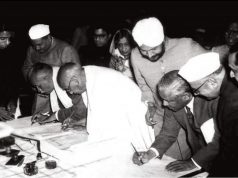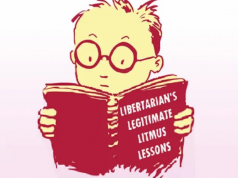Back in 2006, Dr Raghuram Rajan, a leading economist, professor, and bureaucrat, delivered a public lecture under the auspices of the Forum of Free Enterprise as part of its Golden Jubilee celebration series. In the speech, he outlined the broad trajectory of economic mismanagement under socialism in India; the differing impact of economic reforms under decentralized federalism; and the high-skilled, capital-intensive nature of economic dynamism. He also laid out his reform agenda which included liberalization of higher education; management of urban growth; building faith in public institutions; flexible labour laws; infrastructure development; and a focus on incentives, not coercion.
Produced below is an excerpt from the lecture. The lecture was published in the booklet form by the Forum of Free Enterprise.
AD Shroff, who started the Forum of Free Enterprise in the 1950s, was an unofficial delegate to the Bretton Woods Conference that set up the International Monetary Fund – an interesting connection between this forum and my organization. His aim was, in part, to combat the tendencies towards excessive regulation that permeated the Indian economy. Among the others associated with this organization was Nani Palkhivala. These were important but lonely voices against the socialism practised in India then, arguing as Palkhivala said, that it was a fraud – transferring wealth from the honest rich to the dishonest rich. Instead, people like Mr Shroff and Mr Palkhivala maintained a lonely but necessary vigil then, keeping alight the lamp of free enterprise. I am privileged to be speaking from the same forum as these stalwarts.
Since I am an international bureaucrat, what I say reflects my own opinions, and not necessarily those of my organization. But the Fund clearly welcomes free enterprise and attempts to help create the conditions for it to flourish around the world. I therefore particularly welcome the opportunity to speak at this forum and thank the organizers for inviting me. What I want to focus on today is not just how far India has come from those lonely days, but also how far it has to go.
Let me start by asking you to go back just 25 years. Unlike today when you can walk across to a shop to get a working state-of-the-art mobile phone, then one had to wait for years to be allotted a phone, and when that miracle happened, it took a further act of God and the benevolence of the P&T man for the phone to work after that. We had black and white TV then. Urban youth like us had to watch Krishi Darshan for entertainment on the monopoly Doordarshan network, where farmers responded to penetrating questions like “Kya aap khet ko pani dete hain?” Of course, most of the intended audience, villagers, did not have access to a TV even in the few cases they had the electricity to power it with.
Starting around 1980, the Indian economy became a veritable dynamo, posting an average growth of nearly 6 per cent per year over the last twenty-five years. Despite the inevitable unfavourable comparisons with China, very few countries have grown so fast for such a prolonged period of time, or reduced poverty so sharply. We should indeed be proud of what India has achieved, and clearly, many of us are. There is a buzz today in India, a sense of limitless optimism. But is it justified?
To answer this question, let us start by asking how we got here. The best description of India’s path is really “constrained adaptation”. “Constrained” because of the numerous policies and regulations inflicted on us by an untrusting government and “adaptation” because Indians are by nature entrepreneurial. As a result, the law of unintended consequences was at work big time – what the policies produced was very different from what was intended. Consider some. Barriers were erected against the foreign competition to protect domestic enterprise – the idea was this would give a respite to our infant industries, allowing them a nurturing environment while they would grow up and became competitive. But the nurturing environment proved so comfortable that our infants adapted by never growing up. The canonical example was the Ambassador car – a version of the Oxford Morris which remained virtually unchanged over 40 years of production. We waited with bated breath for every new model to see what the shape of the headlights would look like – for it seemed that was all that changed.
A second objective was to use scarce capital resources in the most effective way possible. To do this, the so-called “commanding heights”, such as steel, petrochemicals, and heavy electricals, were commandeered by the public sector. In yet other sectors, private entrepreneurs were allowed in, but heavily constrained by regulations on how much, and what they could do, and where. But because much of the economy was in the hands of those who did not care about profits, and in the rest, the profitable could not grow, the outcome was that India used its scarce capital very inefficiently.
Because employment was so important for India, encouragement was given to small-scale industries by reserving specific areas of production for them. But because firms could not grow to efficient scale, production was unprofitable, so few jobs were actually created. The government sought to protect unskilled labour in large firms – for example, through laws against firing. But this again meant that large firms stayed away from labour-intensive industries, so fewer jobs were created. Moreover, firms resorted to temporary workers or stayed small so that labour laws did not apply. In short, labour laws neither led to the creation of more jobs nor to the protection of most workers.
I can go on but will stop with one last example. An overarching principle was to prevent the concentration of wealth in a few hands. This was another rationale for licensing, as also the Monopolies and Restrictive Trade Practices Act. But again, in an attempt to use government rules to eliminate privilege, we created the opposite – the industrialist who magically got all the licenses as well as the requisite financing. No wonder business was a dirty word.
So what were the consequences of this jumble of policies for India’s pattern of development circa 1980? First and foremost, these policies held India’s growth to a low, but not disastrous, level, famously dubbed the Hindu rate of growth. Indian industry was inefficient, not innovative, and exported very little. Surprisingly, these policies did not mean that India produced less manufacturing goods as a whole for a country at its stage of development. It did mean, however, that the composition of its manufacturing activity was unusual: India produced more than its share of capital- and skill-intensive goods (think public sector petrochemical plant) while underutilizing what it had in plentiful supply-its abundant labour or even its innovative capacity.
That many engineering graduates like me left engineering or even the country was partly because the economic environment in the country at that time simply did not need the creativity and the innovation that we brought to the table.
To me, this message was forcefully reinforced when after doing a degree in management, I joined one of the country’s foremost business groups as a management trainee. A CEO of one of the group companies berated the engineers in the group of management trainees he was taking around, arguing that we had wasted the nation’s money by taking a precious engineering place and then departing to the ranks of management. While he was showing us around the factory, however, we noticed two elevators going up. We appeared to be waiting for the elevator on the left even though the elevator on the right was available. When asked why, he replied, “We are waiting for the management elevator, this one is for the engineers and workers”.
It was not just the middle class that did not benefit, our villages were still not electrified and our poor still had no access to safe clean drinking water. So despite all the rhetoric about socialism, government policies were of the few, by the few, and for the few. I have argued that this may have been unintended, but perhaps I am being charitable. Perhaps indeed the consequences were fully intended but were cloaked in the rhetoric of social purpose, and the public confused with smoke and mirrors. Perhaps India’s greatest enemy was not the proverbial foreign hand but the vested interests inside.
Be that as it may, there was a silver lining. The constraints caused India to be highly diversified in its manufacturing even back in 1980. And a portion of its labour force was highly skilled, a clear legacy of Pandit Nehru’s emphasis on science, higher education, and also leading-edge technologies for the public sector. How many countries, at India’s then stage of development, could boast of having a space program? How many advanced countries even now can boast of schools of the calibre of the IIT’s? Thus India had the capabilities provided the constraints were loosened and the right opportunities emerged. And that is indeed what happened.
In 1980, government attitudes towards the economy, and the private sector, in particular, started to change. Under Mrs Gandhi and then Rajiv, pro-business reforms were set in motion, with liberalized access for domestic firms to capital imports (including, presciently, to computers), technology, and foreign exchange, and the gradual relaxation of industrial licensing. Later, in the aftermath of the foreign exchange crisis in 1990, broader reforms that were more genuinely pro-competition were introduced-barriers to foreign trade were dismantled, inward foreign investment was liberalized, and important services such as telecommunications and finance were opened up.
Second, but no less important, India started becoming more decentralized politically. The decline of the Congress’ power and the rise of regional parties conferred greater political autonomy on the states, translating to autonomy even in the economic sphere. States increasingly prospered, or not, based on what they did rather than because of actions at the centre.
The full text of the lecture is accessible here (page no. 5).
To read more musings, click here.
IndianLiberals.in is an online library of all Indian liberal writings, lectures and other materials in English and other Indian regional languages. The material that has been collected so far contains liberal commentary dating from the early 19th century till the present. The portal helps preserve an often unknown but very rich Indian liberal tradition and explain the relevance of the writings in today’s context.
Post Disclaimer
The opinions expressed in this essay are those of the authors. They do not purport to reflect the opinions or views of CCS.






